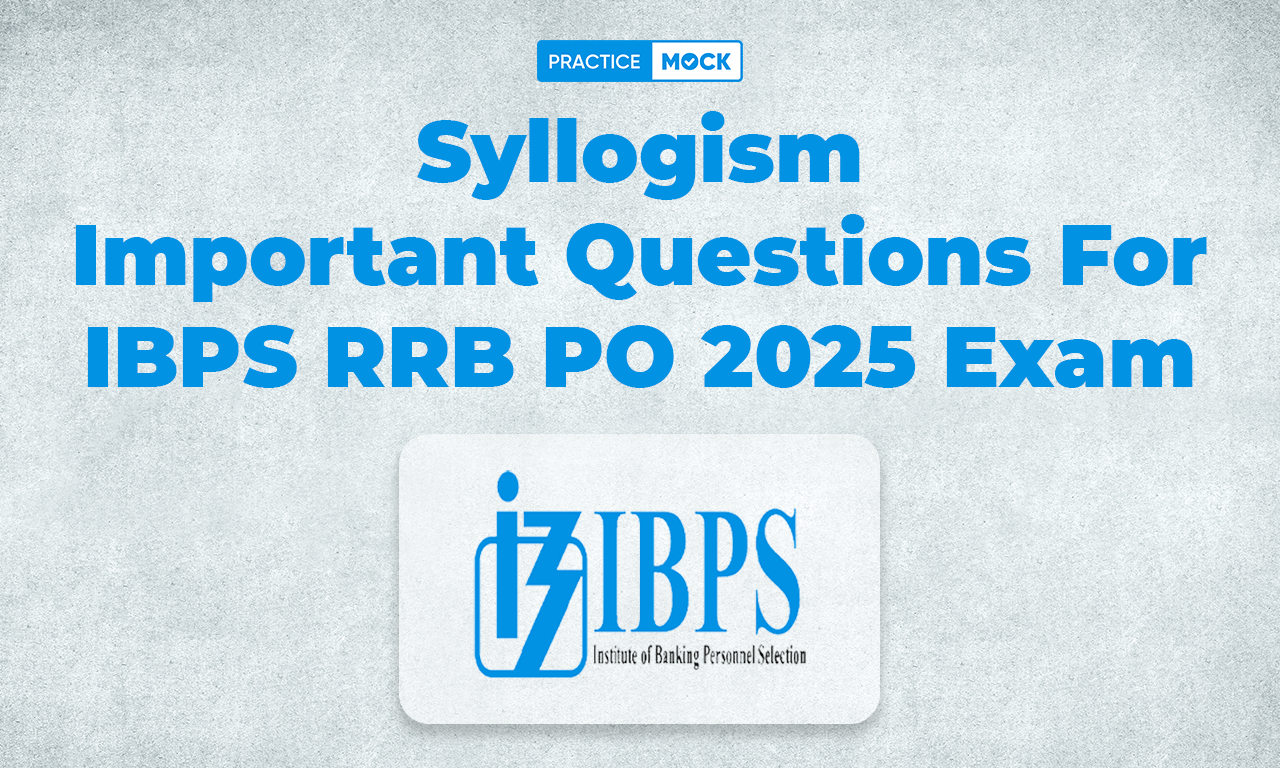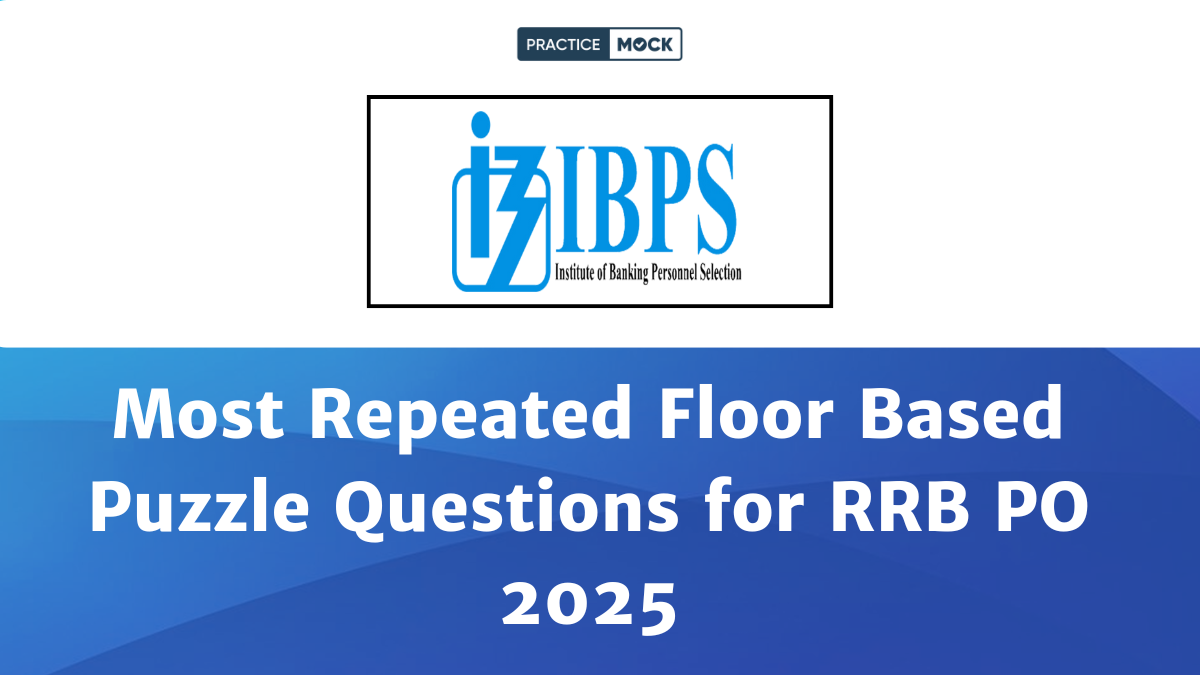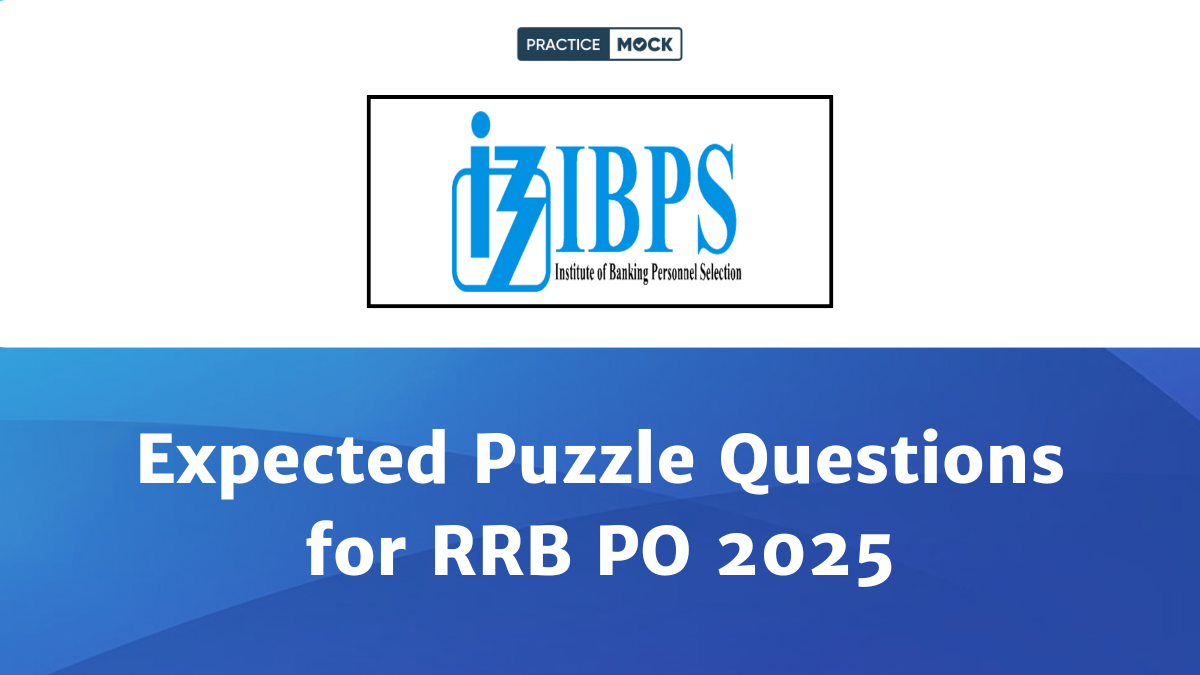Syllogism Important Questions for IBPS RRB PO 2025 Exam


Syllogism For IBPS RRB PO 2025 Exam: Syllogism is one of the interesting topics that belongs to the reasoning ability section. Candidates can expect at least 2-3 questions at an easy to moderate level from syllogisms in the IBPS RRB PO 2025 Prelims exam. One can make this topic easy if he/she has a good understanding of making a Venn diagram because solving these problems can be easier by converting the statements or conclusion into visual form. In this blog, we have provided Syllogism Important Questions for IBPS RRB PO 2025 Exam for prelims exam with the basic concept of the syllogisms. Candidates are advised to first understand the concept and then start solving the questions. A PDF is attached to this blog that contains solutions to the questions and more questions based on different patterns. So, solve all the questions and increase your chances of success in the exam.
Concept of Syllogism
A syllogism is a fundamental concept in logical reasoning that draws a conclusion from two or more statements.
The key characteristics of a syllogism are:
- Deductive: They may be true and when we apply the rules of logic, necessarily and inevitably, we arrive at the conclusion.
- Formal: In forms the structure of the argument is organized as though the premises and conclusions have particular roles and functions.
- Logical: The collection of evidence only depends on the correlation between the terms without the consideration of other extraneous variables.
There are four basic forms of syllogisms, classified by the quantity of the subject and predicate:
- Universal Affirmative (All A is B): All humans are mortal.
- Universal Negative (No A is B): No humans are perfect.
- Particular Affirmative (Some A is B): Some humans are healthy.
- Particular Negative (Some A is not B): Some humans are not old.
Syllogisms Important Questions PDF Link
Question 1: In the question below there are three statements followed by two conclusions I and II. You have to take the three given statements to be true even if they seem to be at variance from commonly known facts and then decide which of the given conclusions logically follows from the three statements disregarding commonly known facts.
Statements:
All light are dark.
Each dark is beam.
Every beam is shadow.
Conclusions:
I. Some shadow are light.
II. Some beam are light.
A) Both conclusion I and conclusion II follow.
B) Only conclusion II follows
C) Neither conclusion I nor conclusion II follows
D) Only conclusion I follows
E) Either conclusion I or conclusion II follows.
Question 2: In the question below there are three statements followed by two conclusions I and II. You have to take the three given statements to be true even if they seem to be at variance from commonly known facts and then decide which of the given conclusions logically follows from the three statements disregarding commonly known facts.
Statements:
Only a few cz is fz
All jz is fz
Some jz is pz
Conclusions:
I. Some pz is cz
II. All jz being cz is a possibility
A) Both conclusion I and conclusion II follow
B) Only conclusion II follows
C) Only conclusion I follows
D) Neither conclusion I nor conclusion II follows
E) None of the above
Question 3: In the question below there are three statements followed by two conclusions I and II. You have to take the three given statements to be true even if they seem to be at variance from commonly known facts and then decide which of the given conclusions logically follows from the three statements disregarding commonly known facts.
Statements:
A few TT are YY.
Each YY is HH.
No HH is VV.
Conclusions:
I. None YY is VV.
II. Some TT are HH.
A) Both conclusion I and conclusion II follow.
B) Only conclusion I follows
C) Neither conclusion I nor conclusion II follows
D) Only conclusion II follows
E) Either conclusion I or conclusion II follows
Question 4: In the question below there are three statements followed by three conclusions I, II and III. You have to take the three given statements to be true even if they seem to be at variance from commonly known facts and then decide which of the given conclusions logically follows from the three statements disregarding commonly known facts.
Statements:
Each gift is present.
All present are surprise.
Some prize are surprise.
Conclusions:
I. Some present are prize.
II. Some surprise are gift.
III. A few present are gift.
A) Only conclusion II and conclusion III follow
B) Only conclusion I follows
C) None of the conclusion follows
D) Only conclusion III follows
E) None of the above
Question 5: In the question below there are three statements followed by two conclusions I and II. You have to take the three given statements to be true even if they seem to be at variance from commonly known facts and then decide which of the given conclusions logically follows from the three statements disregarding commonly known facts.
Statements:
Few initials are covers.
Mostly covers are papers.
No steel is papers.
Conclusions:
I. Some covers are not steel
II. Some initials are papers
A) Only conclusion II follows
B) Both conclusion I and conclusion II follow.
C) Neither conclusion I nor conclusion II follows
D) Only conclusion I follows
E) None of the above
IBPS RRB PO Other Article
| IBPS RRB PO Salary | IBPS RRB PO Exam Pattern |
| IBPS RRB PO Cut Off | IBPS RRB PO Syllabus |
| IBPS RRB PO Previous Year Question Papers |
Syllogism Important Questions For IBPS RRB PO 2025 Exam FAQs
A syllogism is a fundamental concept in logical reasoning that draws a conclusion from two or more statements.
You can expect at least 2-3 questions from the syllogism in the IBPS RRB PO 2025 Prelims exam.
Candidates can get the syllogisms important questions for the IBPS RRB PO 2025 exam in this blog.
Recent Posts
UPSC Admit Card 2025 Out for Prelims, Get Direct Link
The UPSC has released the UPSC Admit Card 2025 for Prelims exam. In this blog,…
How to Crack RBI Grade B in First Attempt?
Aspirants preparing for RBI Grade B exam. Know the 10 tips to crack RBI 2025…
IBPS PO vs RRB PO, Which Exam is Easier to Crack?
IBPS PO or RRB PO? Compare difficulty, pattern, and job roles to choose the best…
How to Master Government Schemes for RBI Grade B Exam
Master government schemes effectively for the RBI Grade B exam with comprlete strategies, Important resources…
IBPS RRB Scale 2 Officer GBO Syllabus and Exam Pattern 2025
IBPS RRB Scale 2 Officer GBO Syllabus and Exam Pattern 2025, Know the syllabus of…
RBI Grade B Study Plan 2025 For 60 Days, Ultimate Roadmap to Exam Success
Aiming to ace RBI Grade B 2025? Follow our 60-day powerhouse schedule for expert strategies,…



